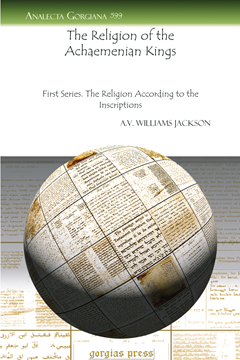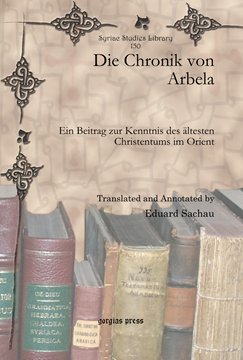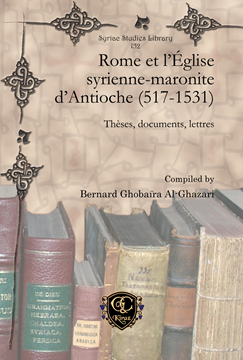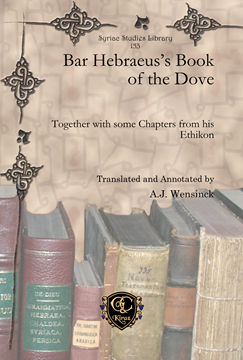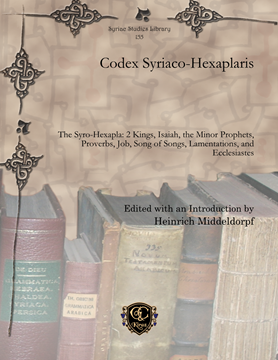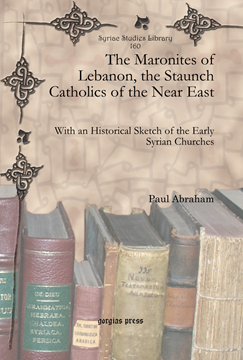Die Apologie des Aristides
Edited with an Introduction by Edgar Hennecke
Series: Analecta Gorgiana 597
ISBN: 978-1-61719-495-5
This work is a reconstruction of Greek, Armenian, and Syriac versions of an early Christian text that explains to the Emperor why Christianity is the only philosophically adequate religion.
$50.00 (USD)
Tattuva-Kaṭṭaḷei, Law of the Tattuvam
A Synopsis of the Mystical Philosophy of the Hindûs
Series: Analecta Gorgiana 598
ISBN: 978-1-61719-550-1
This article is a close translation, with explanatory notes, of the treatise Tattuva-Kattalei, the law of things according to their essential nature. This treatise was probably designed as a guide or manual for the Guru.
$37.00 (USD)
The Religion of the Achaemenian Kings
First Series. The Religion According to the Inscriptions
Series: Analecta Gorgiana 599
ISBN: 978-1-61719-551-8
The author sets out to uncover more about the religion of the Achaemenian Kings and the Zoroastrian religion through many different kinds of ancient inscriptions and texts, both Persian and non-Persian.
$36.00 (USD)
Die Chronik von Arbela
Ein Beitrag zur Kenntnis des ältesten Christentums im Orient
Translated and Annotated by Eduard Sachau
Series: Syriac Studies Library 150
ISBN: 978-1-61719-496-2
Sachau here gives an annotated German translation, with lengthy introduction, of the controversial Chronicle of Arbela, which gives sketches of 20 early bishops (104-511) of the city, including mention of martyrdoms under the Persians.
$150.00 (USD)
Rome et l'Église syrienne-maronite d'Antioche (517-1531)
Thèses, documents, lettres
Compiled by Bernard Ghobaïra Al-Ghazari
Series: Syriac Studies Library 152
ISBN: 978-1-61719-500-6
This volume constitutes a documentary history of the Maronites and their relationship to Rome from the 6th to the 16th century. The author provides texts in Latin, Arabic, Syriac, and French to illustrate this history.
$169.00 (USD)
Bar Hebraeus's Book of the Dove
Together with some Chapters from his Ethikon
Translated and Annotated by A.J. Wensinck
Series: Syriac Studies Library 153
ISBN: 978-1-61719-501-3
Barhebraeus' Book of the Dove, a manual for monks, with a spiritual autobiography, is here given in English translation with a substantial introduction (123 pages).
$184.00 (USD)
Mystic Treatises by Isaac of Nineveh
Translated from Bedjan’s Syriac Text with an Introduction and Registers
Translated and Annotated by A.J. Wensinck
Series: Syriac Studies Library 154
ISBN: 978-1-61719-502-0
A.J. Wensinck (1882–1939) here offers an English translation of Isaac of Nineveh’s (late 7th cent.) mystical work, with a total of 82 chapters on various spiritual themes. An introduction and indices accompany the translation.
$196.00 (USD)
Codex Syriaco-Hexaplaris
The Syro-Hexapla: 2 Kings, Isaiah, the Minor Prophets, Proverbs, Job, Song of Songs, Lamentations, and Ecclesiastes
Edited with an Introduction by Heinrich Middeldorpf
Series: Syriac Studies Library 155
ISBN: 978-1-61719-503-7
In this work, two volumes in one, Middeldorpf presents an edition of a large part of the Old Testament (2 Kings, Isaiah, the Minor Prophets, Proverbs, Job, Song of Songs, Lamentations, and Ecclesiastes) together with over 250 pages of commentary.
$264.00 (USD)
The Monks of Kûblâi Khân Emperor of China
Or the History of the Life and Travels of Rabban Ṣâwmâ and Mâr Yahbhallâhâ III
Translation and Introduction by E.A. Wallis Budge
Series: Syriac Studies Library 157
ISBN: 978-1-61719-508-2
This volume contains the English translation of the histories of Rabban Sawma and Mar Yahbalaha III (ca. 1230-1300) and their travels from China across Persia into Iraq. The translator also offers over 100 pages of prefatory material.
$205.00 (USD)
The Maronites of Lebanon, the Staunch Catholics of the Near East
With an Historical Sketch of the Early Syrian Churches
By Paul Abraham
Series: Syriac Studies Library 160
ISBN: 978-1-61719-511-2
This volume, intended for general readers, covers the history and characteristics of the Maronite Church from its earliest times to the end of the nineteenth century.
$171.00 (USD)


